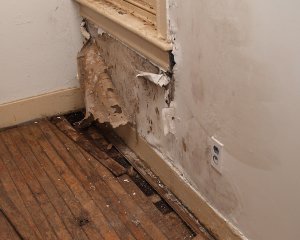6 Most Common Sources of Water Leaks in Your Home: How to Identify and Address Them
6 Most Common Sources of Water Leaks in Your Home: How to Identify and Address Them
Blog Article
The writer is making a few great points about How to detect water leaks in your home overall in this great article which follows.

Leakages not just trigger waste of water but can also cause unneeded damages to your residence as well as promote undesirable natural growth. Sadly, water leaks might go undetected given that a lot of the pipework in our house is hidden. By looking and understanding for everyday scenarios that create leaks, you can protect your residence from future leakages as well as unnecessary damages. Today, we will certainly check out six leakage creates that may be causing your pipelines to leak.
Instant temperature level changes.
Extreme temperature level changes in our pipelines can create them to expand and also contract unexpectedly. This growth and also contraction might create cracks in the pipes, specifically if the temperature level are listed below freezing.
Corroded water supply
This may be the reason of staining or bending on your water pipelines. If our plumbing system is old, consider replacing the pipelines given that they are at a greater threat of deterioration than the more recent designs.
Defective Pipe Joints
The point at which your pipes link is often the weakest link in the waterline. Pipeline joints can degrade gradually, leading to water leakages. Unfortunately, the majority of pipe joints are not easily noticeable. If you have loud pipelines that make ticking or banging noises, particularly when the warm water is activated, your pipeline joints are possibly under a great deal of stress. It is a good idea to have your plumber check your system yearly.
Trespassing origins
Many water leakages begin outside the house instead of inside it. If you see an unexpected reduction in water pressure, say in your faucet, take time to head out and also examine your backyard. You may discover wet spots or sinkholes in your backyard, and that might mean that tree origins are getting into water lines causing water to seep out. You can have your plumber check for invasion, especially if you have trees or shrubs near your residential or commercial property.
Poor Water Connectors
At times, a leak can be triggered by loosened hose pipes and also pipes that provide your appliances. In situation of a water connections leakage, you may observe water running straight from the supply line or puddles around your devices.
Clogged Drains
Blocked drains may be annoying as well as inconveniencing, yet they can in some cases wind up causing an overflow resulting in burst pipelines. Maintain removing any type of products that might go down your drains that could block them to stay clear of such inconveniences.
All the above are root causes of leaks yet not all water leaks result from plumbing leakages; some leaks might originate from roof covering leakages. All leaks ought to be fixed quickly to prevent water damages.
Leakages not only cause waste of water however can likewise create unneeded damages to your house and also advertise undesirable organic growth. By looking as well as understanding for everyday circumstances that trigger leakages, you can secure your residence from future leakages and also unneeded damage. Today, we will look at six leak triggers that may be triggering your pipes to leak.
At times, a leakage can be created by loosened tubes and also pipelines that provide your devices. In instance of a water links leakage, you might observe water running straight from the supply line or puddles around your home appliances.
How To Check For Water Leak In Your Home
How To Check for Leaks
The average household's leaks can account for nearly 10,000 gallons of water wasted every year and ten percent of homes have leaks that waste 90 gallons or more per day. Common types of leaks found in the home are worn toilet flappers, dripping faucets, and other leaking valves. These types of leaks are often easy to fix, requiring only a few tools and hardware that can pay for themselves in water savings. Fixing easily corrected household water leaks can save homeowners about 10 percent on their water bills.
To check for leaks in your home, you first need to determine whether you're wasting water and then identify the source of the leak. Here are some tips for finding leaks:
Take a look at your water usage during a colder month, such as January or February. If a family of four exceeds 12,000 gallons per month, there are serious leaks.
Check your water meter before and after a two-hour period when no water is being used. If the meter changes at all, you probably have a leak.
Identify toilet leaks by placing a drop of food coloring in the toilet tank. If any color shows up in the bowl after 10 minutes, you have a leak. (Be sure to flush immediately after the experiment to avoid staining the tank.)
Examine faucet gaskets and pipe fittings for any water on the outside of the pipe to check for surface leaks.
Undetected water leaks can happen without the home or business owner even realizing. If you suspect a water leak, but not able to find the source. It is time to contact a professional water leak detection service, The Leak Doctor.
How To Find a Water Leak In Your Home
https://www.leakdoctor.com/blog/How-To-Check-For-Water-Leak-In-Your-Home_AE197.html

We hope you liked our part about Common Water Leaks In House. Many thanks for taking time to read our posting. Those who enjoyed our post kindly be sure to share it. We take joy in reading our article about How to Find Water Leaks.
Visit Website Report this page